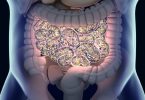Chances are most of us will have to deal with the occasional bee sting at some point in our lives. If you are allergic to bee stings, you’re probably already prepared and have an Epinephrine pen (shot/needle) handy, right? However, for those of us who don’t have this allergy, treatment remains something of a mystery. Sure, there are plenty of old “wife’s tales” which purport to offer the best bee sting home treatment; but what treatments really work?
The first step is to check the affected person for symptoms of allergic reaction. For instance, breathing problems, dizziness, hives, or severe swelling. If any of these reactions (or more severe symptoms) are indicated you should immediately contact emergency services and attempt to inject the person with Epinephrine as soon as possible.
If however, a person isn’t displaying any type of allergic relation to the bee sting, then you can follow up with a simple treatment regiment that will alleviate the pain, swelling, and discomfort associated with the affliction.
First off, you want to remove the stinger. Some people will simply use their fingernails to accomplish this task, while others take the more scientific (and perhaps more sanitary) approach of using tweezers instead. It’s important that you don’t “pinch” the stinger also, because that can actually force more venom under your skin.
Next, you’re going to want to apply a generous amount of ice (or a frozen object) to the affected area. It should be noted that if you are wearing any tight fitting garments or accessories, you should remove them so that they don’t place undue pressure upon those areas that are prone to swelling. Typical over-the-counter drugs like ibuprofen or acetaminophen can be used to help manage the pain associated with bee stings as well; some individuals even like to take antihistamines in order to help manage swelling and relieve related symptoms like itchiness.
Naturally, if the symptoms or swelling persists longer than 2-3 days, you should probably seek out professional medical assistance. As previously mentioned, anyone experiencing symptoms of anaphylaxis should immediately seek out emergency medical care.







